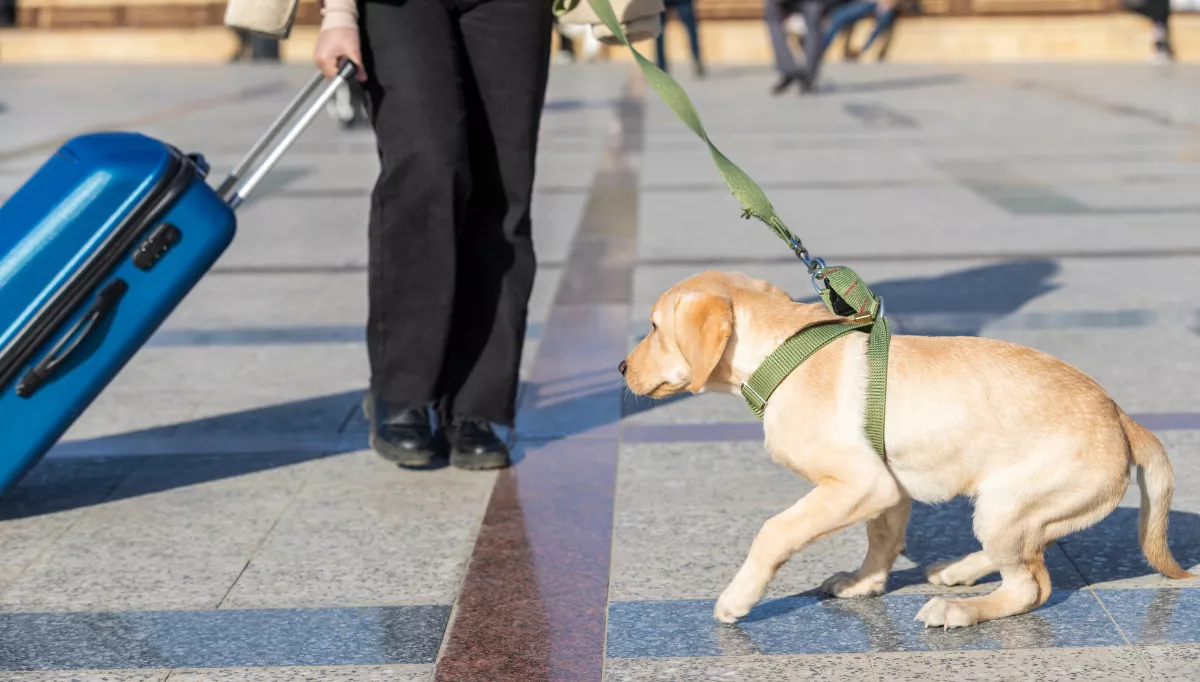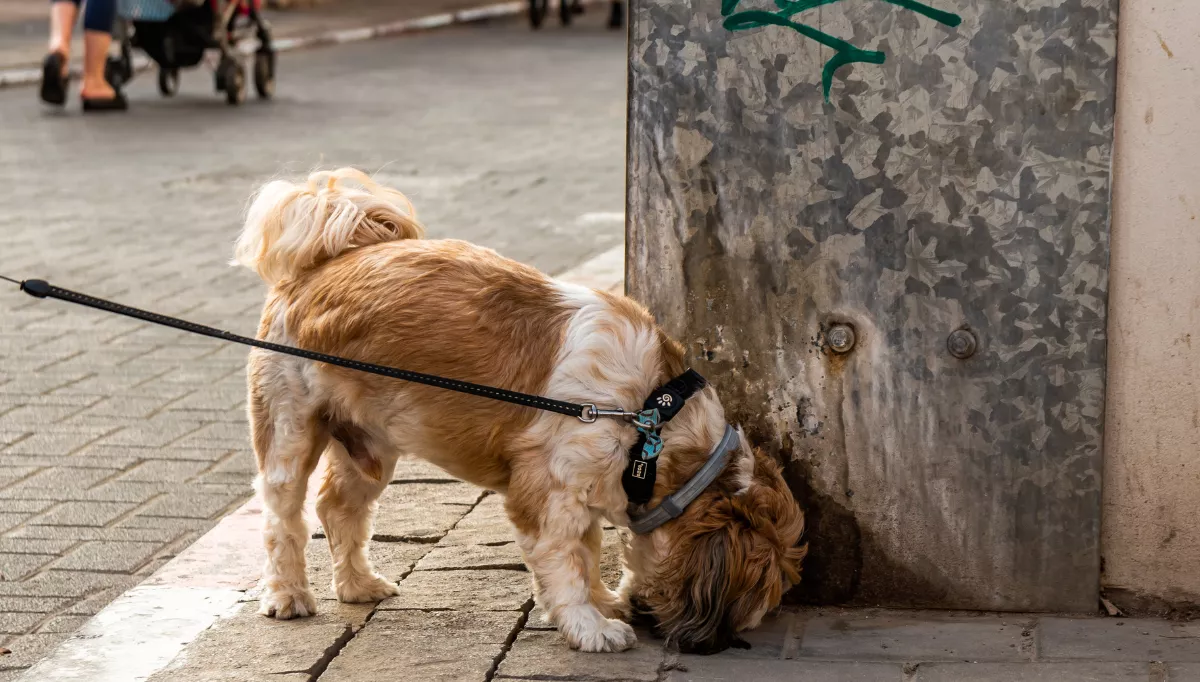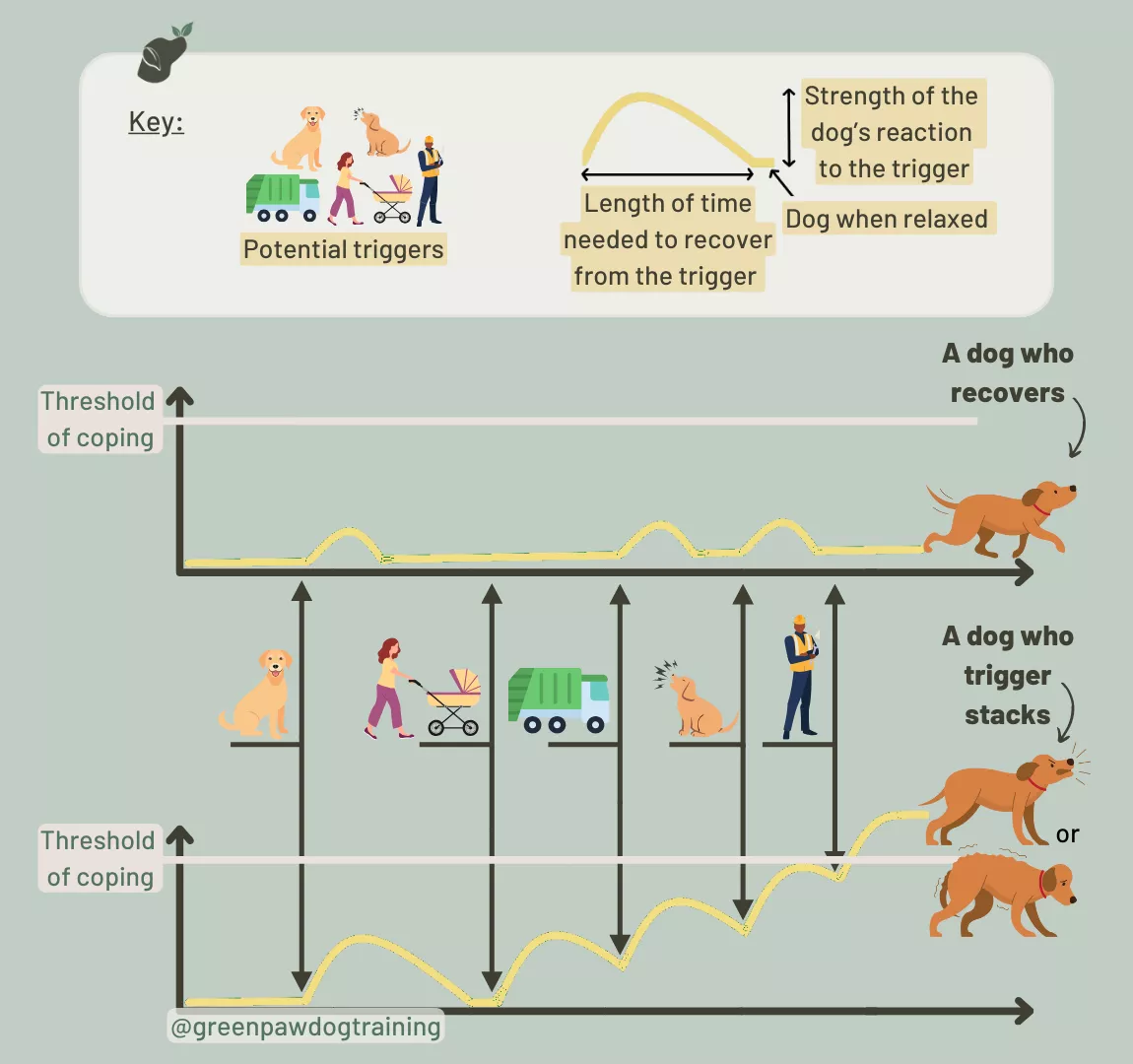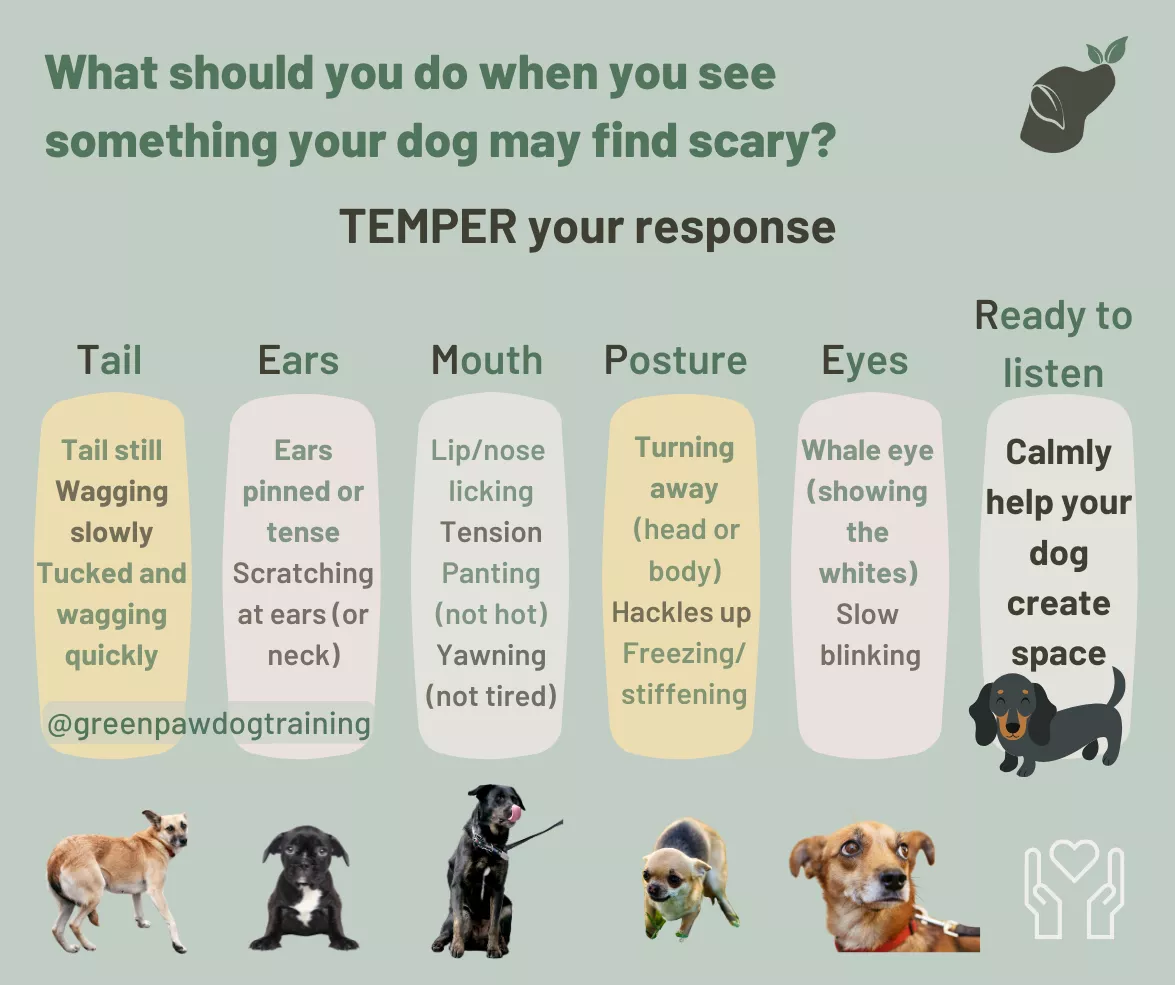Does your dog lunge and bark out of nowhere?
They could be Trigger Stacking


If your dog seems to react "out of nowhere," you're not alone. Many families experience this and struggle to work out why.
There's a good chance your dog is trigger stacking.
What Is Trigger Stacking?
Trigger stacking occurs when multiple stressors, or "triggers," combine to overwhelm your dog. These triggers could be minor on their own, but together, they create a heightened stress response.
For context, imagine one weekday morning you've slept through your alarm, spilled your coffee, then hit traffic on your commute. You rush into work, and a colleague catches you and says the lift is out of order. "JUST TYPICAL", hands thrown into the air, eyes hard roll. You might even snap at your colleague (shooting the messenger).
What about a morning where you woke up on time, enjoyed your coffee and a scroll, and had a smooth journey in? When your colleague says the lift isn't working, you're more likely to shrug it off and head to the stairwell.
In the first scenario, the broken lift was stacked on top of three previous triggers. In the second, the lift was the only annoyance that day.
Small triggers stacked together put us all on edge; dogs included. This is often known as 'the straw that broke the camel's back'.
Going over threshold
Every dog has a threshold for what they can cope with. Let's take a look at the difference between two dogs with the same threshold, but one that recovers well from small stressors, and one that trigger stacks:

First, we have 'a dog who recovers'. This dog has a faster recovery ↔, a lower reaction ↕ , and fewer triggers (they aren't bothered by the pram or the man).
In contrast, we have 'a dogs who trigger stacks'. This dog has more triggers, and also a stronger stress response ↕ to the trigger. This dog could still have a calm walk if there were large enough gaps between these triggers to recover. However, from the pram onwards, you can see that he doesn't have enough time to recover ↔ before the next trigger. This new stress response is instead added to the previous one. As these smaller flashes of stress stack on top of each other, the dog goes over their threshold, and the lunging and barking starts (or they might freeze and start shaking).
Signs of Trigger Stacking in Dogs
Recognising the earlier signs of trigger stacking is key to understanding your dog's behaviour. These will be subtler stress signals than the eventual lunging or shaking.
This video gives a brilliant overview of stress signals in our dogs: Dog Body Language 101
You're also welcome to save this to see these signals at a glance:

What Are Common Triggers for Dogs?
Every dog is unique, but some stressors are more common than others. Knowing these can help you identify what might be bothering your dog.
Common Triggers:
Unexpected or loud noises
Close or heavy traffic
Prams, scooters and bikes
Crowds
Unknown dogs or people
Atypical clothing (e.g., umbrellas, high-vis jackets, or puffy coats)
Physical discomfort (e.g., being too hot, unwell or sore, or being yanked by the lead)
Your dog's triggers may stem from past experiences, natural sensitivities, or breed traits. For example, herding breeds often react to fast-moving objects, while rescue dogs may have trauma-related triggers you don't know about.
Pay close attention to your dog's body language to identify their specific stressors. This insight allows you to reduce trigger stacking and manage their stress before it leads to overwhelm or a meltdown.
How to Help Your Dog Recover Between Triggers
Now you understand more about stacking, you can take steps to help your dog recover between stressors and stop them from going over their threshold. Here’s how:
- Identify your dog's triggers
Work out which potential triggers in the list above worry your dog by looking for the subtle stress signals shown in the diagram above. - Help them recover
After encountering anything your dog finds triggering, stop and encourage sniffing by scattering food on the ground or taking a quiet detour.
Sniffing helps lower stress hormones and provides a mental reset. - Provide breaks
If possible, pause in a quiet side street or park for a few minutes before continuing your walk. These short breaks give your dog a chance to relax and recover. - Build resilience over time
With consistency, you'll have increasing numbers of walks where your dog doesn't stack these minor triggers, and therefore doesn't get overwhelmed. By focusing on building your dog's resilience up slowly, you can help your dog feel more comfortable and you're teaching them how to self-soothe with the sniffing.
Final Thoughts
Trigger stacking is an important concept for understanding why dogs sometimes react in seemingly unpredictable ways.
Teaching your dog to sniff and slow down when they are struggling will help them recover ↔ faster with practice. Think of someone who practices meditation. If they had that stressful morning of waking late and spilling their coffee, they could use the traffic jam to sort through their feelings and breathe fully. Thanks to this recovery, they wouldn't lose control in front of their colleague.
By identifying and working through your dog’s triggers, you can help them feel more at ease and enjoy calmer, more enjoyable walks over time.
